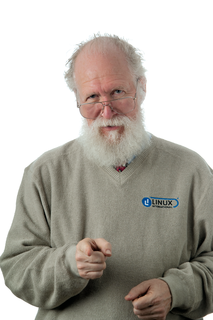
By Jon "maddog" Hall
Traveling to a regional conference, I was going to my hotel with the conference speaker coordinator when he said those magic words: "Linux is great for developing nations and companies just starting out because you do not have to pay for it."
I know what he meant, and to a certain extent I have made the same statements. But over the years, I have come to the conclusion that this is the wrong message. The right message is: "It is not the cost of the software that matters, but the value. And Free Software has greater value than closed source proprietary software."
That most Free Software comes at little or no initial cost should be a by-product of how it is made, not the driving factor of the Free Software industry. Free Software is typically started by someone who has their own "itch to scratch" - rather than by someone who is trying to make a lot of money by writing software for someone else. This might mean that the software has a smaller initial cost. As I pointed out in 1995, if people cannot make money with Free Software, then the Free Software marketplace will probably move forward like a glacier, not a rocket sled.
The next time you talk to someone about Free Software try to separate the "cost" from the "value." Point out that trying to integrate two closed source programs is like trying to glue together the smooth ends of two glass rods. You can use almost any glue you want, but if the glue has no place to grip, the rods will separate quickly. Rough up the ends of the glass rod to give the glue a place to grip, and the rods can be glued securely. It is the same with programs. Given that you can change the source code of programs to integrate with each other ("roughing up the surface"), you can form a better "bond" if you can change the programs - which translates to better value for your development money and for your customer's money.
Often, "cost" is not measured in money, but in time. Not having the solution when the customer needs it can be just as bad as no solution at all. "On time and under budget" are the sweetest words, and having many "partial solutions" to speed the final solution is of great value. The lottery system in Brazil used to be run with closed source, proprietary software. By switching to Free Software they were able to reduce the time necessary to create a new game for the lottery system dramatically, allowing them to start offering the game to their customers sooner. This generated huge amounts of new revenue sooner for the lottery system.
Using commodity components, Beowulf high-performance computing systems can deliver supercomputing power at 1/40th the price of traditional supercomputers. However, most people buy 40 times the computing power for the same outlay of money because faster processing allows them to solve problems in a time frame only dreamed of a few years ago. Additional passes of the engineering/analysis process are typically of much greater value than the additional cost of the systems.
In starting up a high-tech embedded system business, a lot of time and effort goes into negotiating software licenses and contracts for the software you are going to embed. Issues around source code licenses, per-copy binary licenses and what you can and cannot do with the software can eat into startup costs. Open Source software can eliminate a lot of these startup costs and negotiations by allowing startups to license the software freely, if they are willing to obey the licenses of the software they are using. You can only go so low with "Free." The sky is the limit with Open Source value.